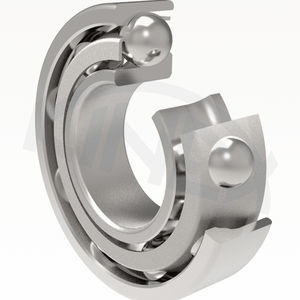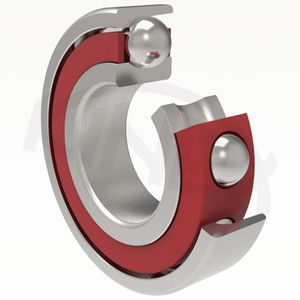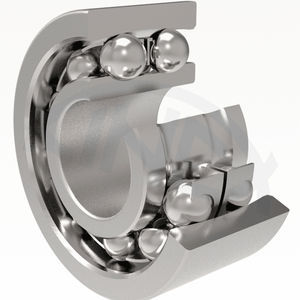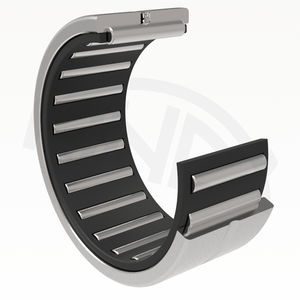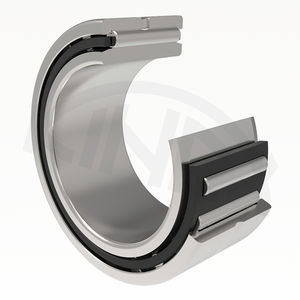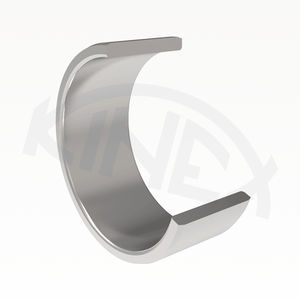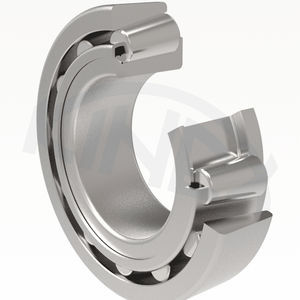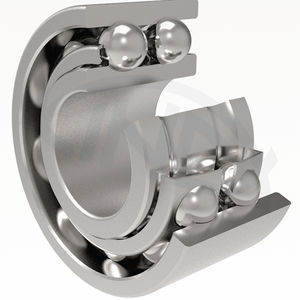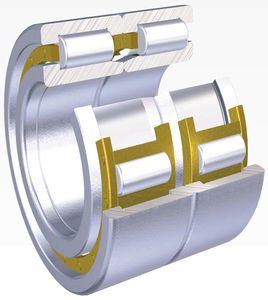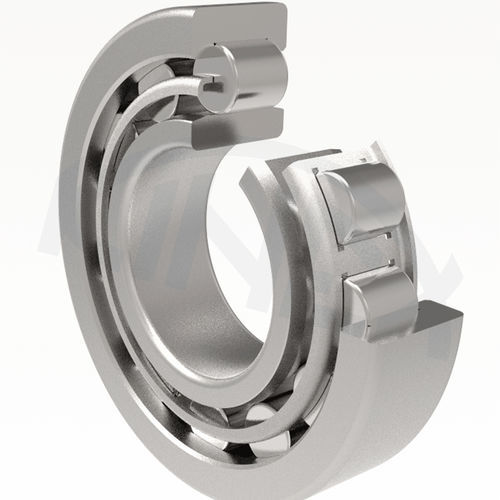
Cylindrical roller bearing 52 seriesradialaxialsingle-row
Add to favorites
Compare this product
Characteristics
- Rolling element
- cylindrical roller
- Configuration
- radial, axial, single-row
- Material
- steel
- Applications
- transmission
- Inside diameter
Min.: 10 mm
(0.39 in)Max.: 150 mm
(5.91 in)- Outside diameter
Min.: 32 mm
(1.26 in)Max.: 240 mm
(9.45 in)- Width
Min.: 32 mm
(1.26 in)Max.: 239.5 mm
(9.429 in)
Description
Single-row cylindrical roller bearings are made in several designs.
The NU design has rollers guided between ribs on the outer ring, while the N design has rollers guided between ribs on the inner ring. Both designs allow axial shift of the rings in both directions.
The NJ design is constructed with two guiding ribs on the outer ring and one on the inner ring.
The NF design is made with two guiding ribs on the inner ring and one on the outer ring. Both designs allow transmission of a limited axial force in one direction.
Besides the elements used in the NJ design, the NUP design has an additional flat ring, functioning as the second supporting head on the inner ring and allows the bearing to transfer limited axial forces in both directions.
Axial guiding in both directions can be achieved by using HJ angle rings for NJ design bearings and axial guiding in one direction for NU design bearings. Designation of the shaped angle ring belonging to individual bearings with tapered hole are stated in dimension tables.
Single-row cylindrical roller bearings have higher load-bearing capacity than single-row ball bearings of the same size, and are suitable for mounting with high radial load, high rotational frequency and where fixed mounting of both rings is required.
Catalogs
No catalogs are available for this product.
See all of KINEX-KLF‘s catalogsRelated Searches
- Rolling bearing
- Steel bearing
- Ball bearing bearing
- Roller bearing
- Radial rolling bearing
- Axial rolling bearing
- Single-row bearing
- Deep groove ball bearing
- Double-row bearing
- Precision bearing
- Cylindrical roller rolling bearing
- Tapered roller bearing
- Angular-contact bearing
- High-speed bearing
- Industry bearing
- Stainless steel rolling bearing
- Sealed bearing
- Thrust bearings
- Spherical bearing
- Combined bearing
*Prices are pre-tax. They exclude delivery charges and customs duties and do not include additional charges for installation or activation options. Prices are indicative only and may vary by country, with changes to the cost of raw materials and exchange rates.






